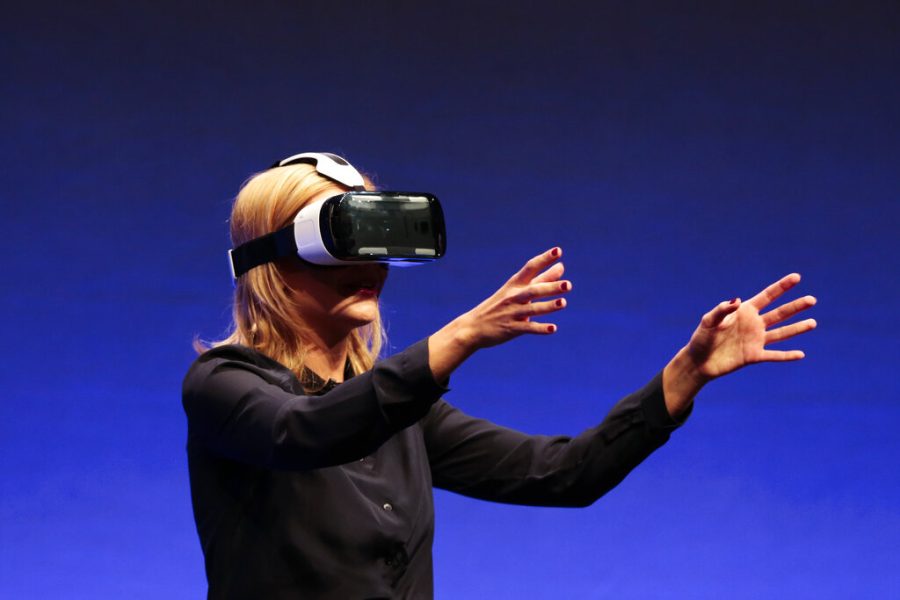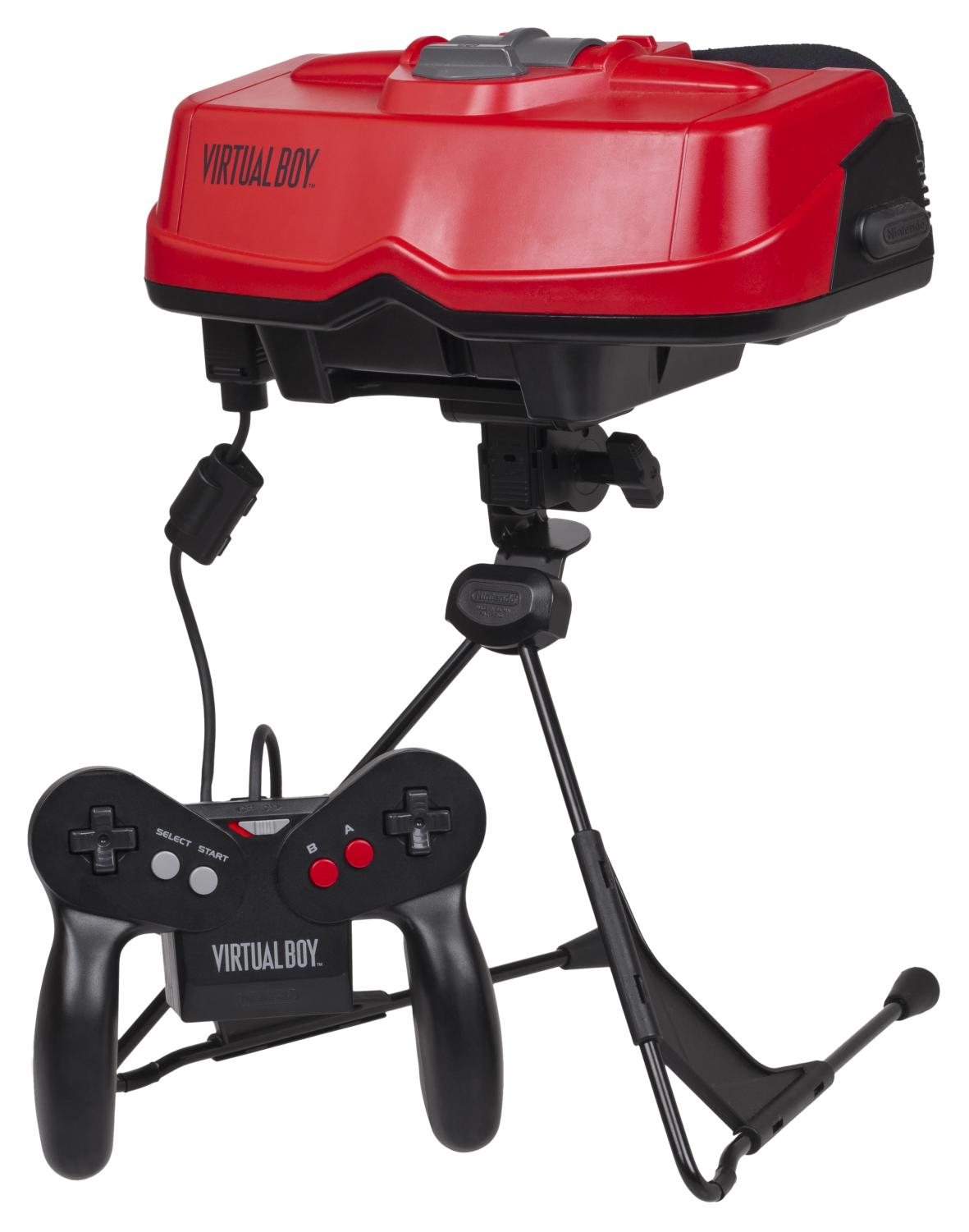OPINION: VR and the Metaverse – The Newest Virtual Wild West
In this September 3, 2014 file photo, British television presenter Rachel Riley shows a virtual-reality headset called Gear VR during an unpacked event of Samsung ahead of the consumer electronic fair IFA in Berlin. (AP Photo/Markus Schreiber, file)
Opinions expressed in the Op/Ed section of The Knight Crier are not necessarily reflective of the views of the entire staff of the KC.
We’ve all been hearing tech CEO’s, journalists, and people in-the-know saying that VR and the Metaverse are the next big things. Companies like Facebook, now Meta, have gone all-in on the Metaverse, changing their names to express their goals and driving up production and focus on VR technology and headsets.
The technology has come a long way in the decades since its inception as well. In 1995, Nintendo released the Virtual Boy to *crickets*. It was a clunky, table-top, red-and-black “virtual-reality headset” that caused players to get headaches quickly after usage. While this wouldn’t catch on, and not only because of the side-effects or the high price, the technology would eventually.
Beginning in 2012, a startup company named Oculus would start a Kickstarter campaign to fund its first project, its original Rift headset, which would require external sensors and to be tethered to a PC at all times. Originally set at a $250,000 goal, the campaign raised over 2.5 million dollars, setting the company up for a successful future.
With developer kits shipping in 2013, Facebook saw great enough promise in the company to purchase it in 2014 for 2.3 billion USD. In 2016, the first official Quest headsets shipped to consumers, and the rest is history. Since then, Oculus has put more of a focus on its wireless headsets that don’t need to be tethered to a computer to work, such as the Quest and Quest 2, featuring motion sensors and cameras built into the headsets themselves.
But while some may be vaguely familiar with VR headsets, those big, chunky pieces of eyewear and controllers that people use to play games and have social experiences, less may be familiar with what the Metaverse fully embraces.
What the Metaverse essentially entails is a virtual space, accessed primarily through VR or AR technologies, used to play games, have social experiences, or simply exist in cyberspace. As someone with a VR headset, simply putting it on and watching videos or movies in virtual reality on a large, floating screen with nothing around it is an experience that immerses you fully.
What companies like Facebook and Microsoft believe the future of the Metaverse involves is things such as virtual properties, with actual virtual neighbors – sounds a bit crazy, right? Well, the idea has been around for awhile, even if not as immersive. Back in the early 2000’s, online games such as Habbo and Second Life gave users a taste of what it would be like to live in a virtual world, with virtual neighbors.
The real-world applications of Virtual Reality and the Metaverse are already able to be seen, as through the pandemic, meetings haven’t only taken place on platforms such as Zoom or Google Meet, they’ve also taken place on VR platforms such as Horizon Workrooms or Spaces. On these platforms, users may not only join Zoom meetings as normal, but they can join other VR users around a virtual conference table to create more of a sense of normalcy.
But what about the games? Do you think playing tennis on the Wii back in 2006 was immersive? Well, VR just might be for you. A full virtual world brings about a whole new frontier of game development, especially for those who want to create games and environments designed to suck the players into them and fully immerse them into their worlds.
Games such as Song in the Smoke, Superhot, Job Simulator, and Half-Life: Alyx will immerse the player into their respective worlds arguably better than a big-budget film in a theater with surround-sound. The visuals that move when you do, the 3D imagery, surround-sound, rumbling controllers, interactive environments – all of this adds to the immersion that these games bring to the table.
With immersion, one can even be tricked into thinking that they’re playing a game when, in reality, they’re getting a good workout at the same time. Games such as Beat Saber, Thrill of the Fight, and The Climb can serve the double purpose of being fun experiences and providing physical movement.
Now, while the average consumer may not have a Virtual Reality headset in their household or even a grasp on what the Metaverse really entails as of yet, in the years to come, I believe that the technology will advance to a certain extent that it will become the next internet, the next color TV, and the next smartphone – everyone will want a piece of that.



